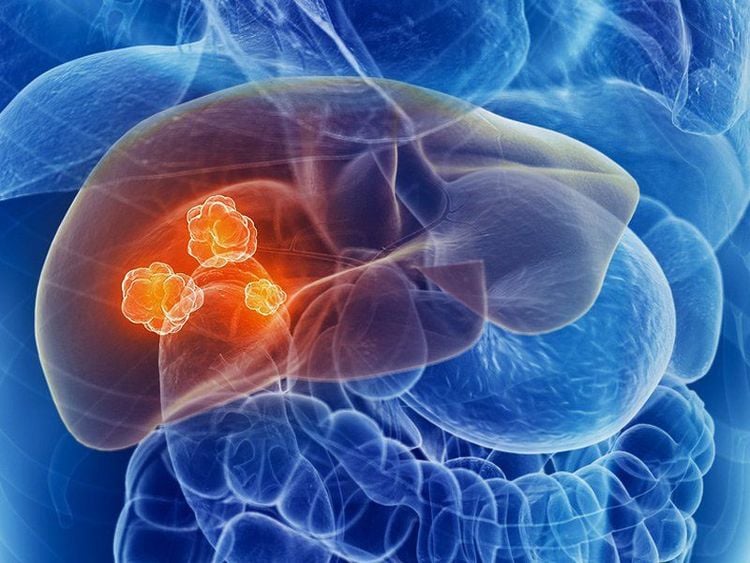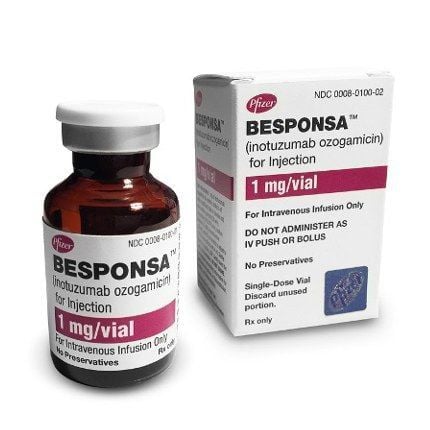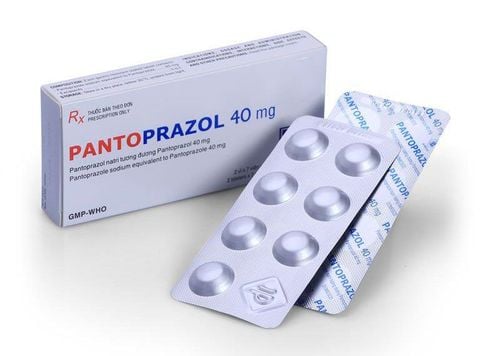This is an automatically translated article.
The article was professionally consulted with Master, Specialist Doctor II Phan Thi Minh Huong - Gastroenterologist - Department of Examination & Internal Medicine - Vinmec Danang International General Hospital.Liver abscess is a dangerous condition caused by many pathogens, the most common cause being amoeba. Amoebic liver abscess often has clinical manifestations that are relatively similar to other types, in order to recognize the need to perform paraclinical measures, thereby giving the right treatment.
1. What is amoebic liver abscess?
Amoebic liver abscess is the formation of pus in the liver parenchyma, the pus can be large or small, solitary or many different foci of pus caused by amoeba. There are four types of human amoeba, of which only one species, Entamoeba histolytica, is active and causes disease.This type of amoeba causes disease through the oral route, when a person is infected with amoeba, it will cause pathology in the colon. Then in the colon they will excrete amoeba cocoons in the feces, this cocoon can last 10-15 days. The cocoon is not destroyed by potassium permanganate and chlorine, with formol 0 5% after 30 minutes the cocoon dies.
People are infected with amoeba when eating or drinking food containing amoeba cocoon, then the cocoon reaches the colon to proliferate, causing amoeba colitis or there are people with asymptomatic infection. Then, because of an injury to the colonic mucosa, the amoeba can enter the portal vein or lymphatic circulation to the liver, causing liver abscesses. Occasionally, they can enter the general circulation causing abscesses of the lung, brain, or spleen, but are rarely seen on examination.
According to statistics, up to 12% of the world's population is chronically infected with Entamoeba histolytica, which is a dangerous source of infection in the community. Amoeba infections are common in tropical and subtropical regions, due to overcrowding and poor sanitation.

Áp xe gan amip là sự hình thành ổ mủ trong gan
2. Characteristics of recognition of amoeba liver abscess
2.1 Clinical signs of amoebic liver abscess In the case of multifocal liver abscess, it often presents acutely, most of the time, single-focal liver abscess progresses more slowly with the following manifestations:A history of travel can be obtained. travel to endemic areas of amoeba. Pain is usually located in the right upper quadrant of the abdomen and may radiate to the right shoulder, because the majority of abscesses are in the right lobe of the liver, accounting for 80%. Pain that increases with forceful breathing, pain in the liver (right lower quadrant) is a prominent sign of amoebic liver abscess. Fever: Usually occurs quite suddenly with high fever, dry lips, moist tongue and may be accompanied by chills at 39 - 400C. Occasionally, some atypical cases may have no fever or mild fever. Digestive disorders: Vomiting and nausea, loss of appetite, weight loss. Cough and difficulty breathing due to irritation to the diaphragm area. Jaundice may occur. When palpating the liver area, the liver is found to have a mass. 2.2 Subclinical signs Blood tests: Leukopenia, mild isochromic anemia, increased erythrocyte sedimentation rate. Blood biochemistry: Abnormal liver function such as increased ALP, ALT, AST, decreased albumin, increased bilirubin. The stool test for E.histolytica antigens is a highly sensitive and specific test. Elisa serum assay for amoeba antigens. Straight chest x-ray: Right diaphragm elevation, possibly atelectasis or pleural effusion. General abdominal ultrasonography: Shows an abscess, which may allow percutaneous aspiration and drainage under ultrasound guidance. The pus in amoeba infections is usually chocolate in color. Abdominal CT scan: It is also a measure to help detect abscesses in cases of unknown or suspected ultrasound, allowing aspiration and drainage. It also helps detect other abscesses in the abdomen or other diseases such as diverticulitis, appendicitis. CT scans can also help detect small abscesses that are difficult to detect on conventional ultrasound. Endoscopic retrograde cholangiopancreatography: Identify site, cause, and combine treatment.

Áp xe gan amip được chẩn đoán lâm sàng qua xét nghiệm máu
3. Treatment of amoebic liver abscess
If liver abscess is not treated or surgically treated in time, amoebic liver abscess will lead to serious complications such as rupture of pus causing inflammation of the entire abdomen, which can cause toxic infection and then coma. death, sometimes the pus hole bursts into the pleura, lung, pericardium causing difficulty breathing, respiratory failure, acute cardiac tamponade.Measures to treat amoebic liver abscess include:
Treatment of amoebic causes: Metronidazole is the first choice for treatment of amoebic liver abscess, with over 95% of patients with liver abscess. due to amoeba recover with this treatment. Diloxanide furoate is used for 10 days to eliminate intestinal amoeba after liver abscess has been successfully treated. Drainage: Drainage is used when medical treatment does not improve, large abscesses, abscesses with a high risk of pus rupture are indicated for drainage under the guidance of ultrasound or CT. Percutaneous aspiration: Can be performed for small abscesses, but most require drainage. Surgery: Indicated when necessary if the abscess is ruptured and there are signs of peritonitis, the abscess is larger than 5cm or multi-walled, the abscess cannot be drained or if there is any Intra-abdominal conditions requiring surgery, such as appendicitis. Symptomatic treatment: Treatment with other measures such as bed rest, nutritious diet, intravenous fluids, antipyretic and analgesic drugs, treatment of complications if any. Thanks to early diagnosis and treatment measures, amoebic liver abscess has reduced mortality if detected early. To limit the risk of disease, it is necessary to take measures to eat hygienically, eat cooked and drink hot and importantly, when symptoms of suspected disease appear, it is necessary to seek medical examination and treatment as soon as possible to avoid the risk of dangerous complications. dangerous.
Please dial HOTLINE for more information or register for an appointment HERE. Download MyVinmec app to make appointments faster and to manage your bookings easily.













